|
Douglas Castle was a stronghold of the Douglas family from medieval times
to the nineteenth century. The first castle(1), erected in the 13th century,
was destroyed and replaced several times until the 18th century when a
large mansion house was built in its place. This too was demolished in the
1938, and today only a single corner tower of the 17th-century castle
remains. The castle was the former family seat of the Prime Minister,
Alec
Douglas-Home.
The castle was located around 1 km north-east of the
village of Douglas, South Lanarkshire, south-west Scotland.
The
Douglas family built the first Douglas Castle, also known as Park, which was constructed of
either wood or stone, sometime before 1288. In 1307, during the Wars
of Scottish Independence the castle was captured and garrisoned by the
English under Lord Clifford. Sir James Douglas, companion of Robert the
Bruce successfully recaptured his family seat by storming the castle on
Palm Sunday, while the garrison were at chapel. he had the garrison killed
and thrown into a cellar, before the structure was burned. The event has
become known as "Douglas' larder".
Robert the Bruce reRobert the Bruce rewarded the
loyalty of the Douglases, and Sir James' heirs were created Earls of
Douglas. Douglas Castle was rebuilt as one of their strongholds, but by
the 15th century, the power of the "Black" Douglases had come to threaten
the Stewart monarchy. In 1455 James II led an expedition against the
rebellious 9th Earl, defeating his forces at the battle of
Arkinholm.
Douglas Castle was sacked and the family's lands and titles forfeited.
The "Red" Douglases, Earls of Angus, had sided with the king against
the senior branch of their family, and it was they who gained the Douglas
lands in Lanarkshire. It is likely that the castle was rebuilt soon after
1455. In 1703, Archibald Douglas, 3rd Marquess
of Douglas was created Duke of Douglas, with his principal seat at Douglas
Castle. The castle was again rebuilt around this time, as a tower house
and an enclosed courtyard with a corner tower. This castle was destroyed
by fire in 1755, with the exception of the corner tower.
In the 1745 rebellion led by Charles Edward Stuart ('Bonnie Prince
Charlie'), Archibald, Duke of Douglas, had the dubious pleasure of the
Young Pretender spending Christmas Eve at Douglas Castle. The Highlanders
in Charles' army spent two wild days in the town and did 'much damage to
residence and property' of the Duke and leaving his house 'worse than a
hog's sty'. They even carried off the
Black Douglas sword', a gift that
was traditionally thought to have been given to the 'Good Sir James'
Douglas by Robert the Bruce in the early fourteenth century. (Memorial,
1746, in Douglas Charter-Chest, cited in Scots Peerage, I, pp.210-11 )
Things did not improve for Archibald, as in 1758 his castle burned
down. He hired the great architect Robert Adam (1728-1792), to build him a
palace even grander than the one built by Archibald Campbell, third Duke
of Argyll at Inverary. However Douglas died before he saw his plans
completed. Had it been
completed the castle would have been the largest in Scotland. As it was
the Duke of Douglas died in 1761, and only around half of the original
design was ever completed. The five storey building had round towers to
the front and square towers to the rear facade, and stood in a very
extensive park spanning the valley of the Douglas Water. The Duke's estate
became the subject of a famous and bitter legal dispute, known as the
'Douglas Cause', between his nephew
Archibald Douglas, 1st Baron Douglas
and the Duke of Hamilton. Lord Douglas was eventually victorious, and the
castle descended through him to the Earls of Home.
The Douglas Homes were staunch supporters of the Episcopalian Church from
the 17th century and were not minded to join the Church of Scotland. The
Episcopalian chapel was the last part of the castle to be built . It was
possibly created as late as the 1870's by Lady Lucy Elizabeth Douglas
Home who commissioned the restoration of old St Brides Douglas. soNormal">
In the 1930s Charles
Douglas-Home, 13th Earl of Home allowed the mining of coal in the park
adjacent to the castle, in an attempt to relieve desperate levels of local
unemployment. Sadly, the mining caused dangerous subsidence to the castle
and it had to be demolished in 1938.
Today, only a ruined corner
tower of the penultimate castle remains, built in the late 17th century.
Three storeys and 9m in height, the tower once stood at the corner of an
enclosure, estimated at around 40m across. The tower stands on a prominent
rise in the valley, to the south of the river, and was retained as a
garden folly when the later mansion was built. Below is a small cellar
block with glazed tiles on the interior walls. Nothing visible remains of
the mansion. Scott used the location and early history
of Castle Douglas as the inspiration for his novel Castle Dangerous. The
castle is still sometimes referred to by this alternative name.
When the castle was demolished, most of the contents were sold off. The
chapel was the last part of the castle to be demolished. Some of the
relics from this chapel and the castle are in the museum at Douglas.
Some can be seen in the gallery. |

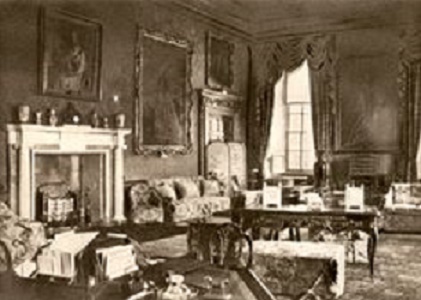
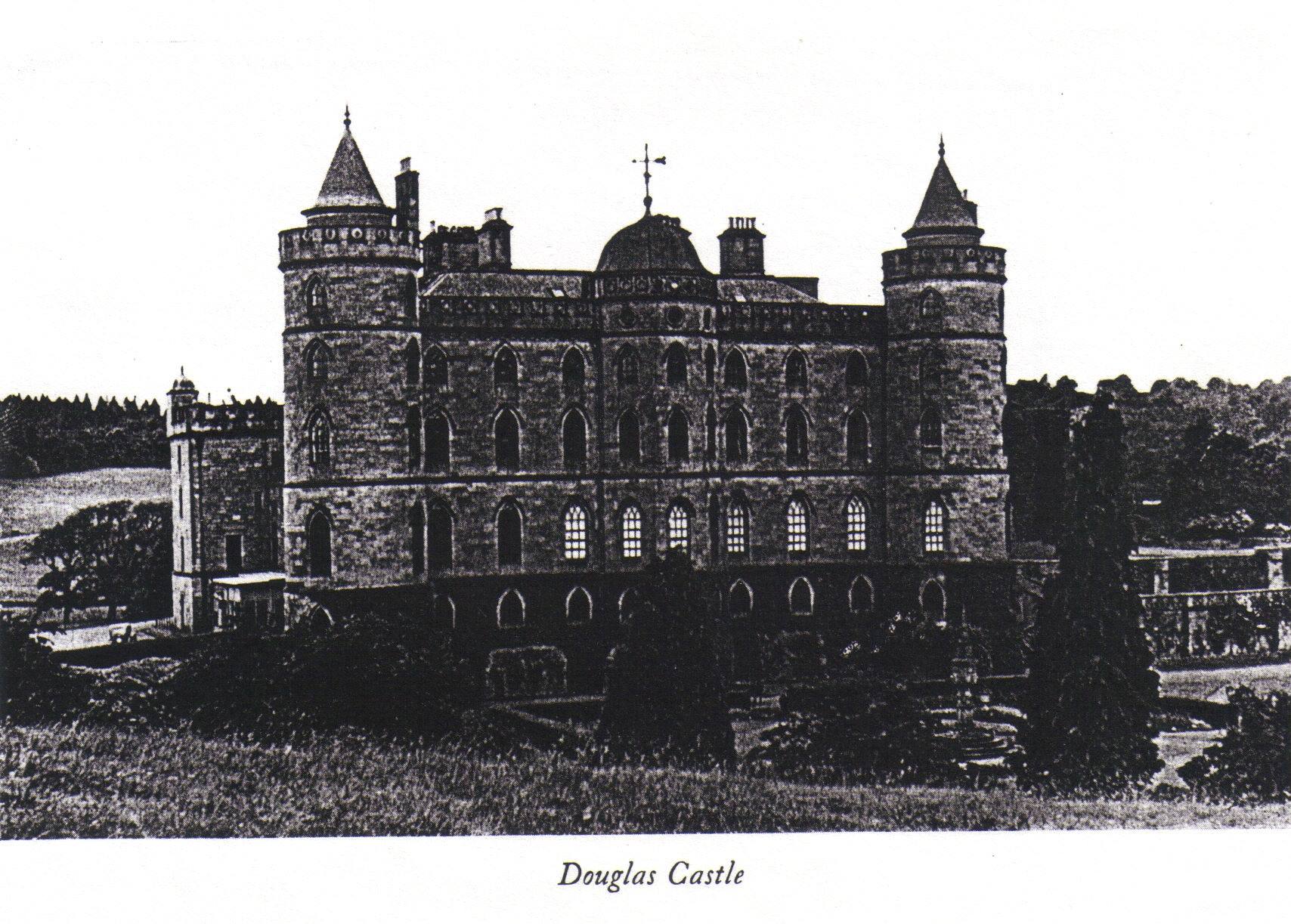

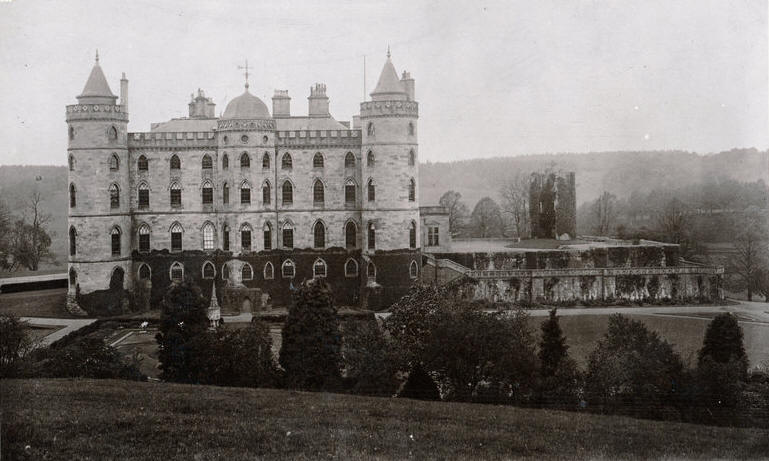
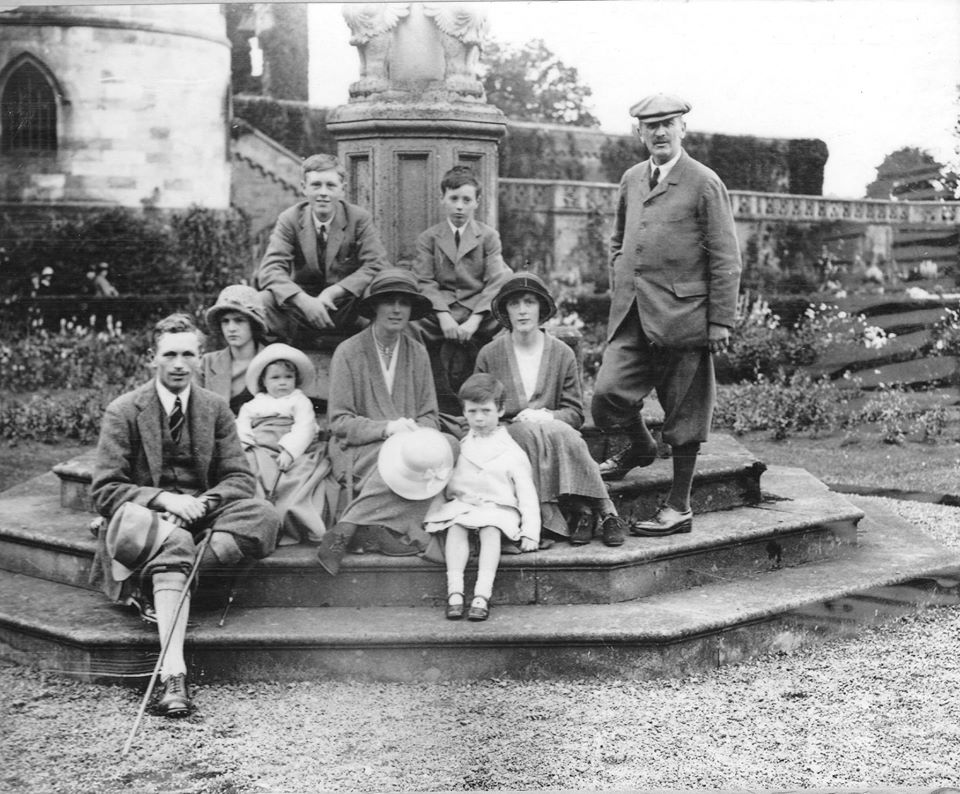
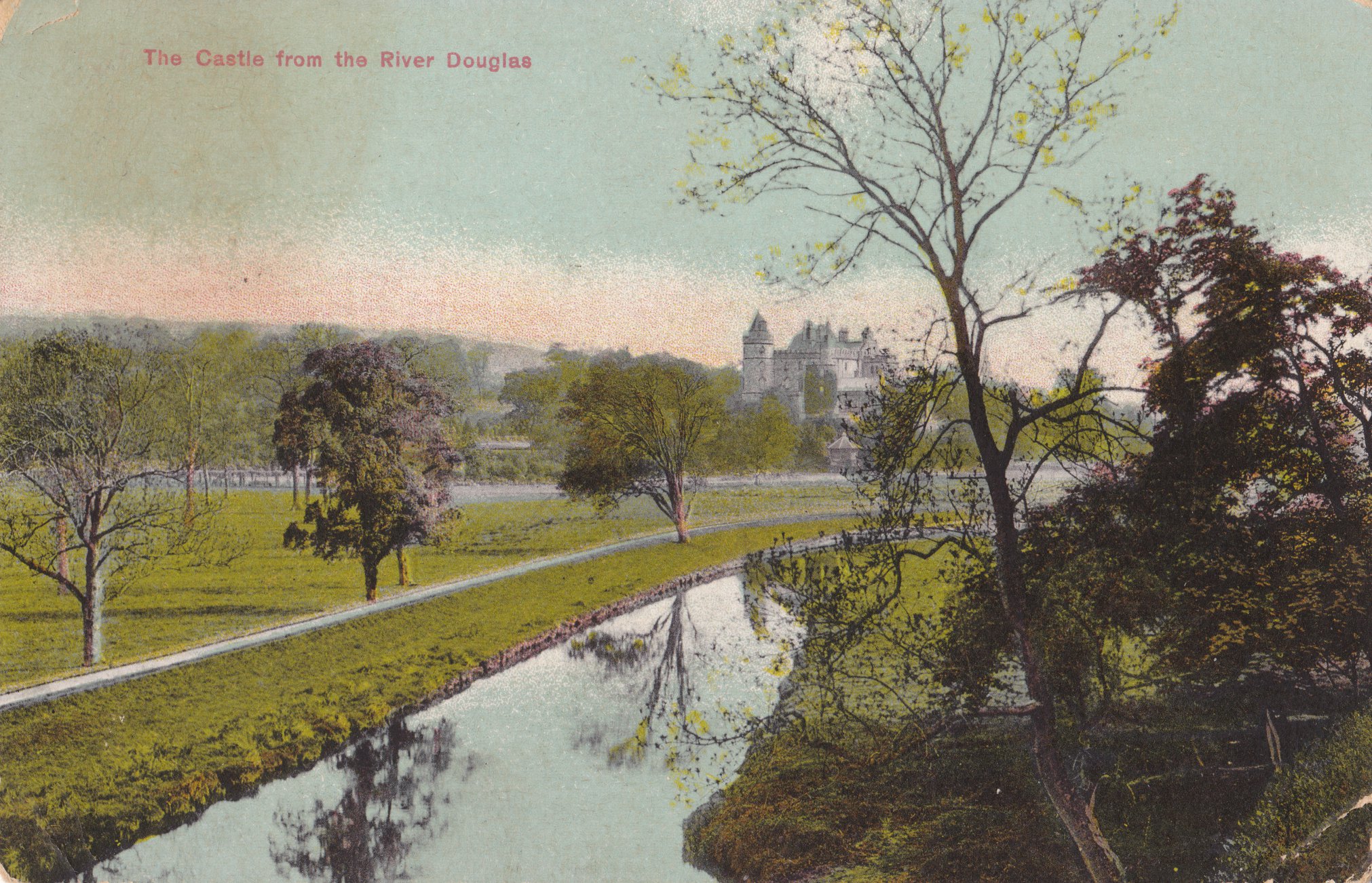

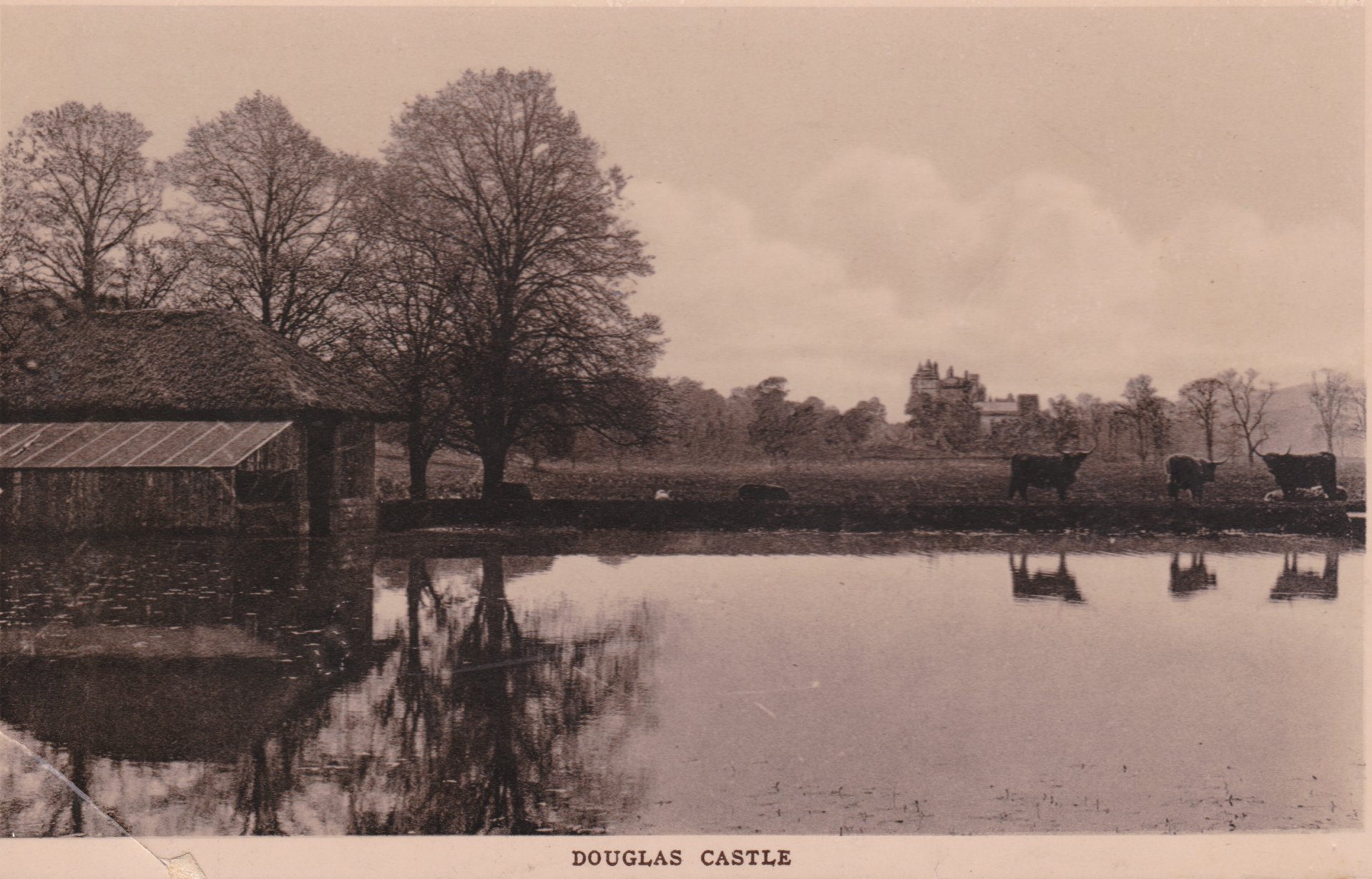
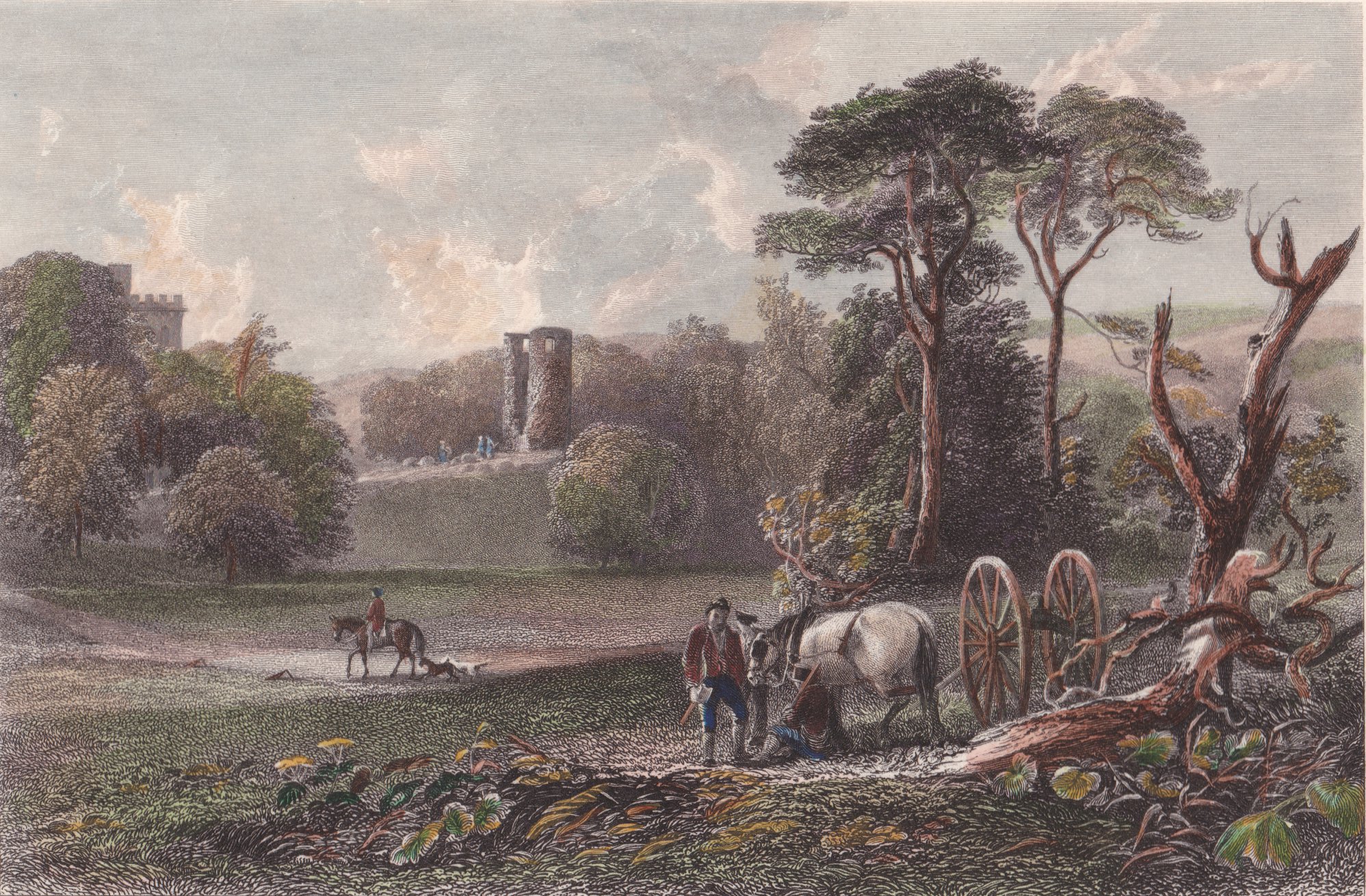
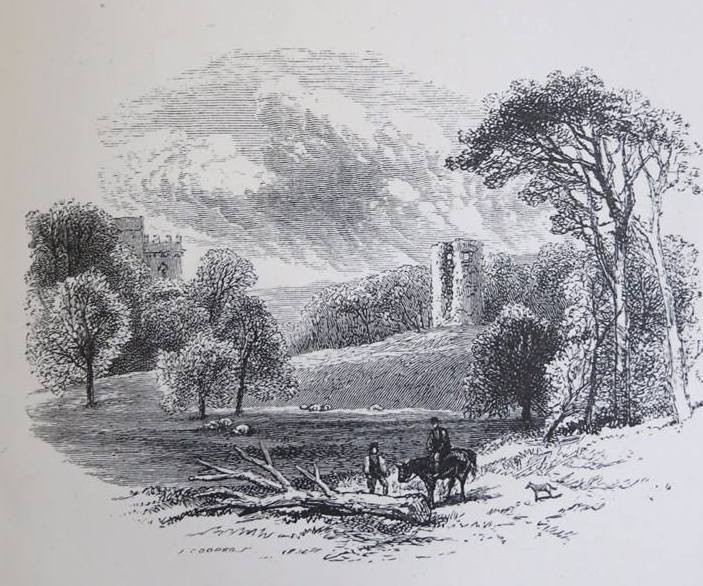
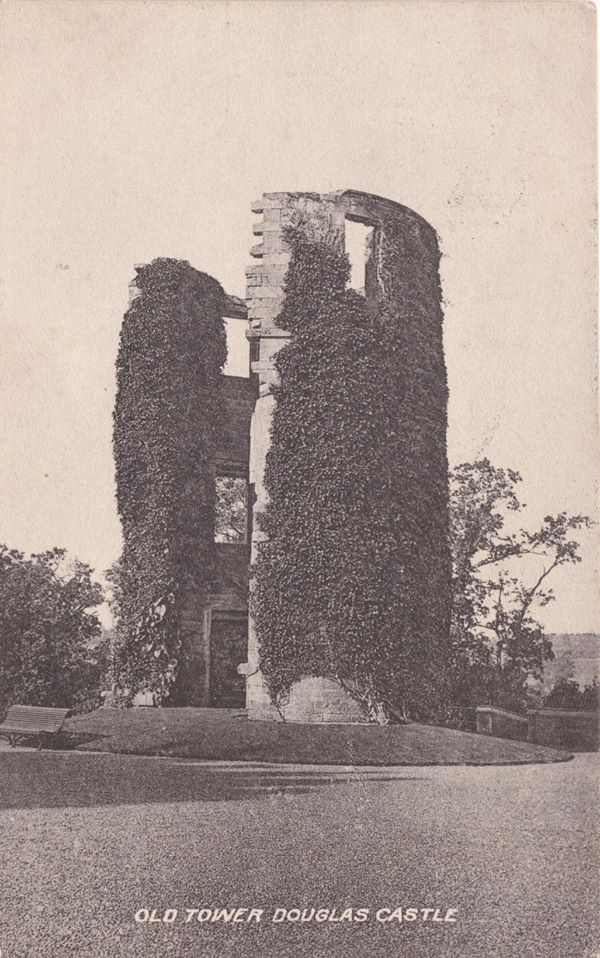









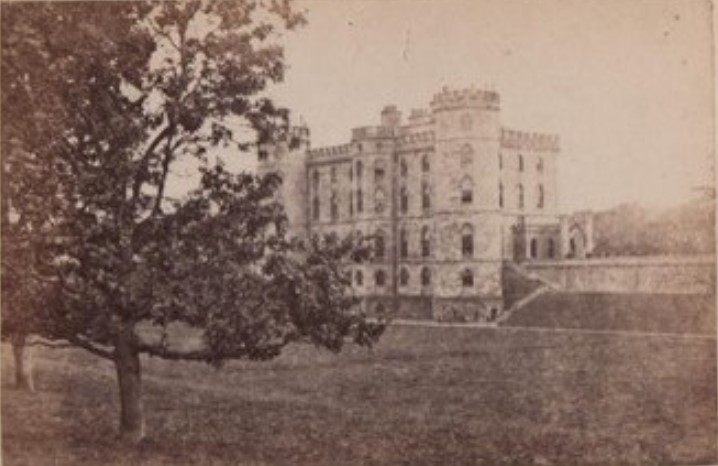


Douglas golf course From 1897-1906 the course was on Weston Farm.
In 1906, the late Lord Home having laid out a golf course in the Douglas Castle Policies, very generously extended the privilege of playing upon it to the Douglas club.
The golf ceased with the onset of WW1 and for the duration of the war the course was allowed to assume it's natural state.

The club and course re-opened in 1921."
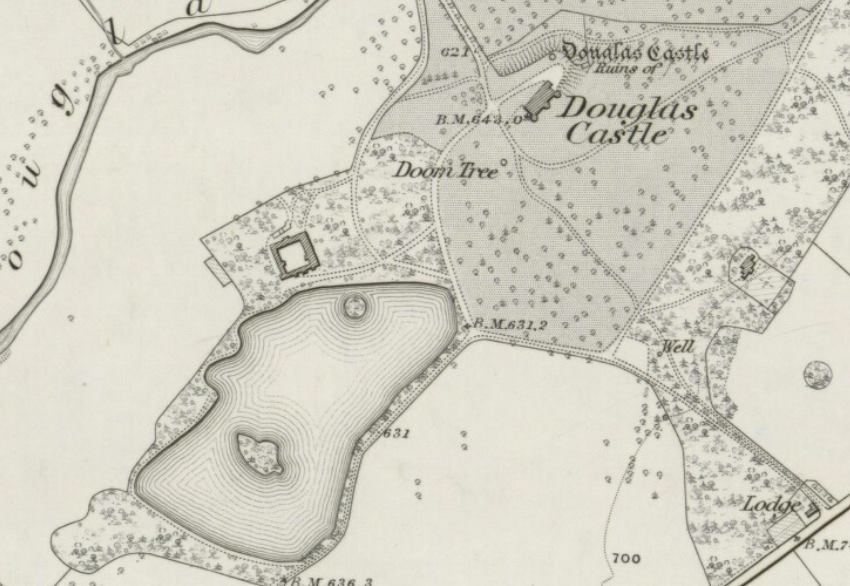

Notes:
1 . The first castle may have
been site a few miles to the east of the later building, at, on or near
Parkhall, Mains Castle and Castlemains.
New Mains FarmThe estate offices are in New
Mains Farm - just to the south of the castle. Extract from George
Vere Irving; The upper ward of Lanarkshire described and delineated
(Volume 2); 1864: New Mains is the homestead of the home-farm on the
Douglas estate, and is excellent in all its extensive arrangements, as
might be looked for where so much land is held in their own hands by the
noble owners, and near to a domain so extensive and so well kept, and on
an estate large enough to demand the supervision of a master of works —
an architect of intelligence, as was the recent occupant, who, after
many years of honourable employ, has gone to the Meams (?Mearns) to farm
largely on his own account. New Mains house stands south of the
turnpike road, which divides it from the walled enclosure of the castle
grounds, and the plot of ground between the dwelling and the road is a
garden, a pretty one, and of some extent. The armorials below are
on the wall and in a store.

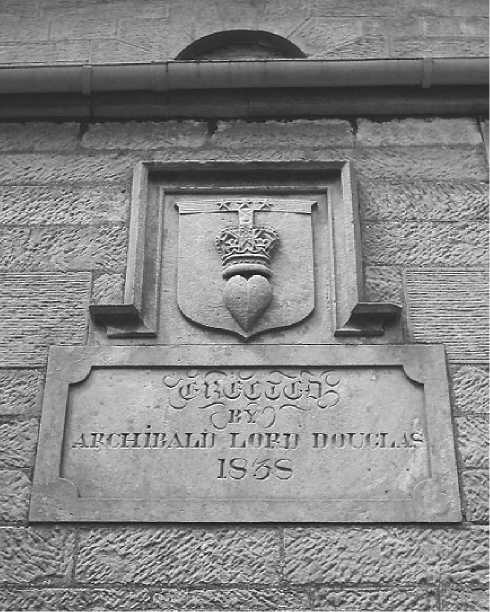 See also:
•
Music - Castle Dangerous
Any contributions will be gratefully
accepted
|


